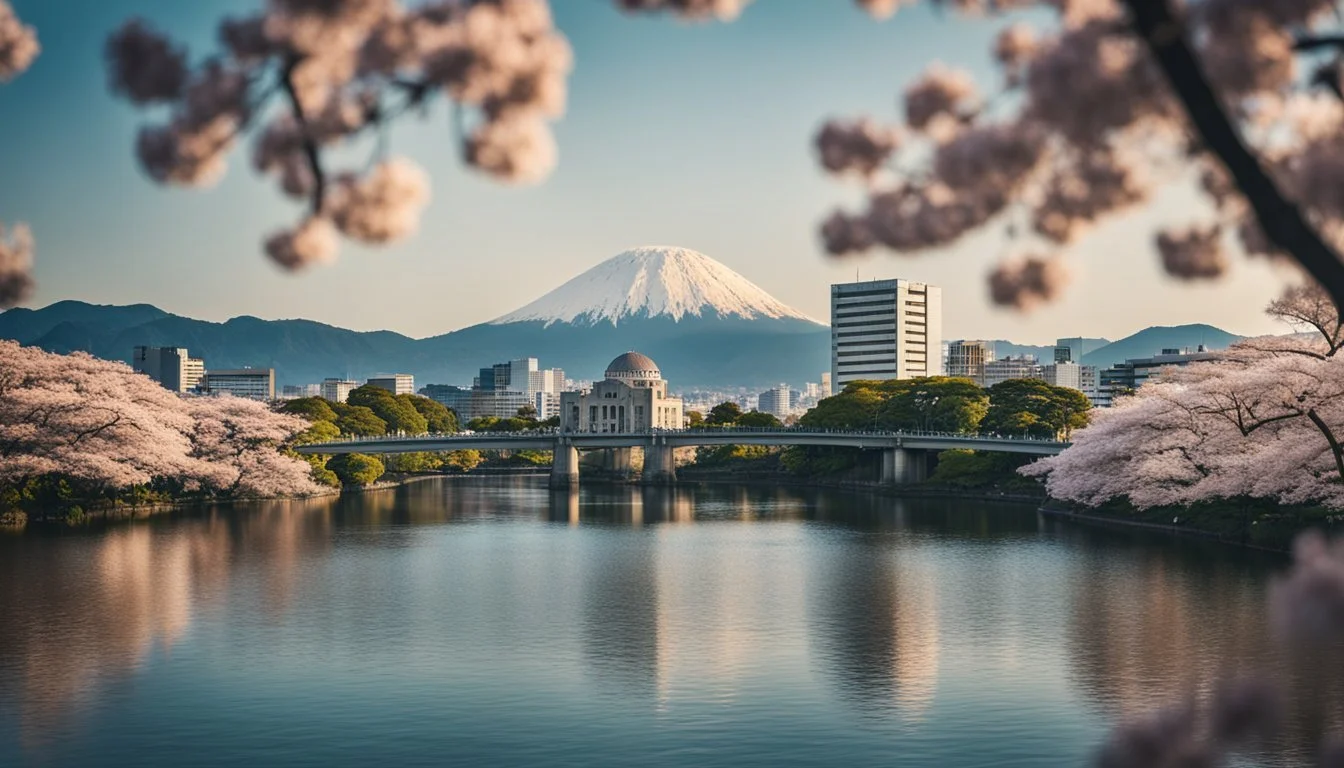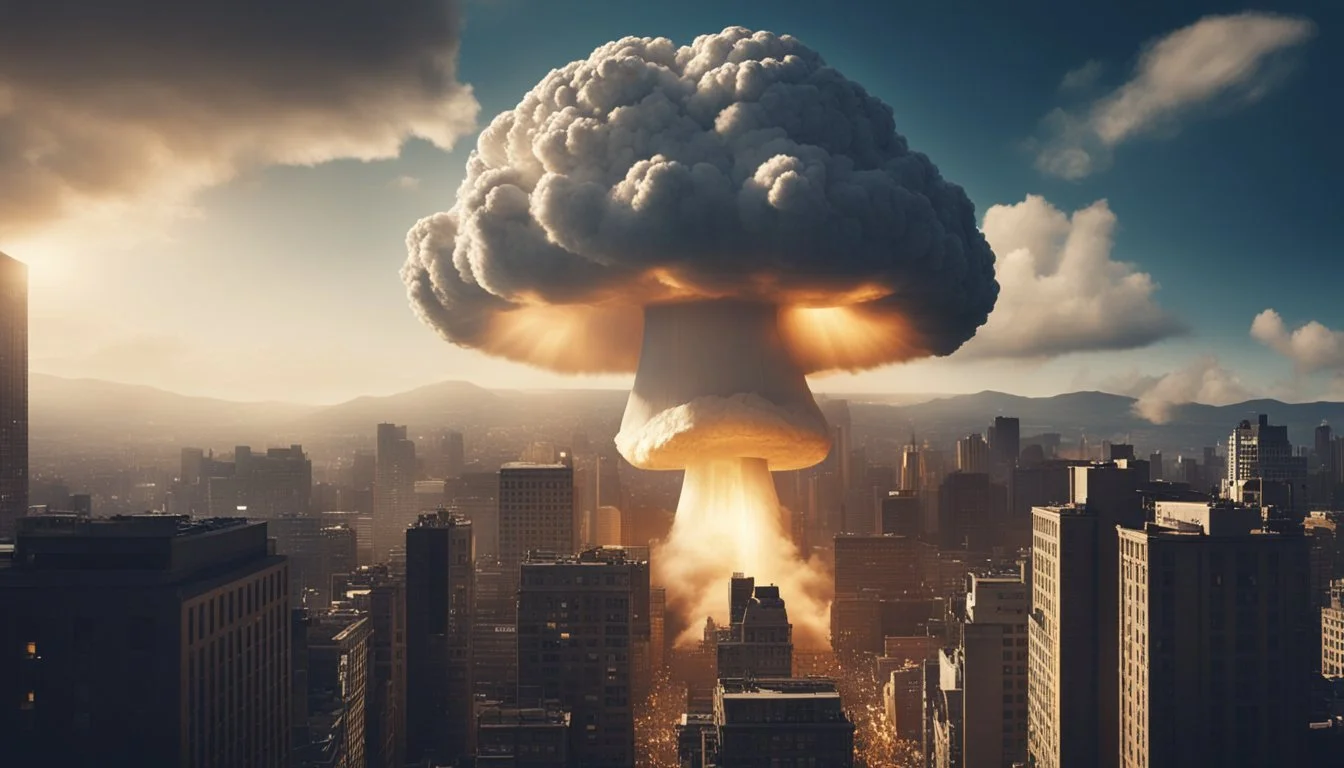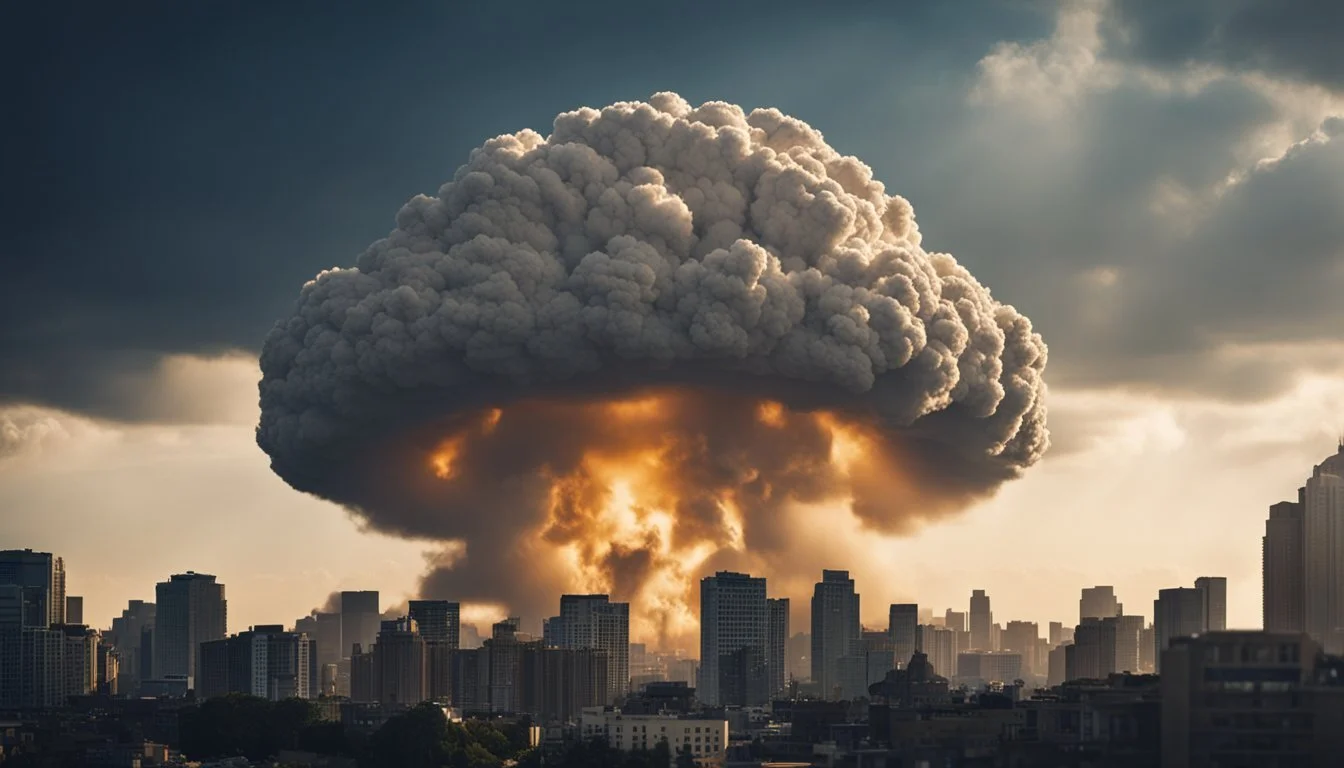Best Documentaries about Hiroshima
Unveiling History and Impact
The bombing of Hiroshima in 1945 was a pivotal moment in human history, marking the first use of nuclear weapons in warfare. Over time, various documentaries have aimed to unravel the intricacies and impact of this tragic event. With diverse perspectives and unique storytelling approaches, these documentaries provide a powerful insight into the devastation of the atomic bomb and its long-lasting effects on the people of Hiroshima.
Exploring survivors’ narratives, critical figures in military and politics, and the scientific innovations of the era, the documentaries delicately and poignantly narrate the events that changed the world forever. From personal accounts of pain and suffering to broader dissections of global politics and scientific progress, the best documentaries about Hiroshima delve into the complexities of the event with sensitivity and depth. With the complexities and suffering endured by the victims, each movie about Hiroshima and Nagasaki relates the individual accounts of many.
To appreciate and understand the magnitude of the legacy left by the Hiroshima bombing, it is crucial to explore these documentaries. They serve as essential storytelling and educational tools that illuminate the historical, moral, and ethical questions raised by one of the most significant moments in human history.
Hellfire: A Journey from Hiroshima
The documentary Hellfire: A Journey from Hiroshima offers a powerful and insightful look into the aftermath of the atomic bombing of Hiroshima. This film takes us on a poignant journey through the memories and experiences of the survivors, shedding light on the unimaginable pain and suffering they faced.
One of several movies about nuclear fallout, the documentary masterfully combines archival footage with firsthand accounts, allowing viewers to witness the resilience of the survivors. They share their stories about the moments leading up to the bombing, the life-altering effects it had on them, and their determination to rebuild their lives and their city.
Hellfire: A Journey from Hiroshima delves deep into the emotional and physical impact of the event, ensuring that the lessons from this dark chapter in history are not forgotten. One of the most profound movies about a bomb, the film serves as a stark reminder of the devastating consequences of nuclear warfare and the importance of pursuing peace and understanding amongst nations to prevent such tragedies in the future.
No More Hiroshima
The devastating effects of the atomic bombings on Hiroshima and its inhabitants continue to be an essential subject explored by many documentary filmmakers. One such film, No More Hiroshima, delves into this topic, focusing on providing viewers with a powerful and truthful exploration of the event.
This compelling documentary combines interviews with survivors and historical footage to help viewers understand the events that unfolded on August 6, 1945. It offers a candid look into the personal stories of those who experienced the tragedy firsthand, shedding light upon the emotional and physical impact the bombing had on the victims and their families.
Additionally, the documentary aims to inform viewers about the ongoing efforts to remember and honor those who have suffered as a result of the bombings. Central to these efforts is the call for peace and the abolishment of nuclear weapons, intending to create a world where the catastrophic events in Hiroshima and other cities like it never happen again.
In conclusion, No More Hiroshima is a thought-provoking and informative documentary that effectively educates viewers about the far-reaching consequences of the atomic bombings on Hiroshima. By presenting the events from the perspective of the survivors and emphasizing the importance of peace and disarmament, this film leaves a lasting impact on all who watch it.
Hiroshima Witness
The documentary Hiroshima Witness offers an insightful look into the personal accounts and testimonies of those who experienced the atomic bombing of Hiroshima during World War II. The film presents a comprehensive collection of stories from survivors, weaving a narrative that showcases the devastating effects of the event.
By gathering and examining various perspectives, the documentary explores the emotions and experiences of the Hiroshima survivors, shedding light on the harrowing realities they faced. These firsthand accounts allow viewers to develop an understanding of the tremendous hardship they underwent and how it continues to impact their lives.
In documenting the historical implications of the atomic bombing, Hiroshima Witness is an essential piece of evidence for future generations. By highlighting these experiences, the film emphasizes the significance of acknowledging the past and disseminating this knowledge to avoid repeating the same mistakes in the future.
While Hiroshima Witness may evoke difficult emotions, it is of the utmost importance for viewers to understand the gravity of the event and appreciate the resilience of those who endured it. Through their testimonies, viewers will learn valuable lessons on the consequences of war and nuclear weapons while empathizing with those who were affected.
Als die Sonne vom Himmel fiel
Als die Sonne vom Himmel fiel is a captivating documentary that provides an in-depth look into the tragic events surrounding the bombing of Hiroshima. Directed by Aya Domenig, this documentary tells the stories of survivors and their families, shedding light on the lasting impact of the nuclear bomb dropped on the Japanese city in 1945.
The film focuses primarily on the personal experiences and emotions of the survivors, giving viewers a human perspective on the catastrophe. The stories shared in this documentary are both heart-wrenching and eye-opening, providing valuable insights into the suffering and resilience of those who witnessed the bombings firsthand.
What sets Als die Sonne vom Himmel fiel apart from other documentaries about Hiroshima is its focus on exploring the generational effects of the bombings. The filmmakers portray the deep-rooted emotional scarring not only within the survivors but also within their families, friends, and communities. This approach delves into the event’s aftermath and explores the broader context of its impact on multiple generations.
Additionally, Als die Sonne vom Himmel fiel has a unique visual style that adds another layer of meaning to the documentary. By blending historical footage, interviews, and artistic visuals, the film creates a compelling narrative that seamlessly weaves together many individual stories. The viewer is left with a greater understanding of the long-term human and emotional costs of the bombing of Hiroshima while remaining mindful of the resilience that has emerged from the tragedy.
The confident and knowledgeable storytelling in Als Die Sonne vom Himmel fiel invites viewers to reflect upon the historical significance of the Hiroshima bombing, connecting personal perspectives with broader contexts. By presenting the stories of survivors and their families in a clear and neutral tone, this documentary leaves a lasting impression. It contributes significantly to our understanding of this terrible event.
The Atom Strikes!
The Atom Strikes! is a powerful documentary that explores the impact of the atomic bombings on Hiroshima and Nagasaki during World War II. Drawing from archival footage, interviews, and personal accounts, this film provides a poignant and comprehensive look at one of the most devastating events in human history.
Throughout the documentary, viewers are taken on a gripping journey, witnessing the decisions made by world leaders and the consequences of those decisions. The film also delves into the experiences of survivors, capturing heartbreaking stories that shed light on the struggles faced by those who lived through the bombings. The Atom Strikes! Serves as an essential reminder of the devastating power of nuclear weapons and the continued need for global efforts towards disarmament.
Utilizing a vast array of resources, such as historical records and eyewitness testimonies, the documentary reveals the immediate and lasting effects of the bombings. It paints a vivid picture of the destruction, despair, and loss experienced by the residents of the affected cities—a stark contrast to the jubilant celebrations back in the United States, where the bombings were seen as a necessary action to end the war.
In addition to examining the political implications of the bombings, The Atom Strikes! also highlights the perseverance and resilience of the Japanese people. Despite the catastrophic events, the documentary showcases their courage and determination to rebuild their lives and cities after the devastation.
Overall, The Atom Strikes! Delivers a riveting and thought-provoking examination of one of history's most tragic events. Through its compelling narrative and emotional storytelling, it provides valuable insights into the human experience and the tremendous cost of war.
White Light/Black Rain: The Destruction of Hiroshima and Nagasaki
White Light/Black Rain: The Destruction of Hiroshima and Nagasaki is a powerful documentary that captures the profound impact of the atomic bombings on the cities of Hiroshima and Nagasaki in Japan. Directed by Steven Okazaki, the film provides a comprehensive account of the events that transpired, as well as the aftermath of the bombings.
Through a series of interviews, the documentary shares the stories of the Hibakusha, or atomic bomb survivors. These firsthand accounts showcase the resilience and strength of the survivors despite the devastation they faced in the wake of the bombings. The film uses archival footage and photographs to supplement the survivor stories, providing a visual context for the viewers.
Another striking aspect of the documentary is its exploration of the development and decision-making behind the atomic bombs. The film highlights the situation’s complexity at the time by presenting the rarely-discussed perspectives of various scientists, military personnel, and political leaders.
In addition to presenting historical facts and personal accounts, White Light/Black Rain also raises questions about humanity's capacity for destruction and the potential consequences of nuclear warfare. The film serves as a reminder of the destructive power of atomic weapons and the importance of ongoing dialogue about disarmament and non-proliferation.
Original Child Bomb
The documentary titled Original Child Bomb provides an insightful look into the events surrounding the atomic bombing of Hiroshima. Drawing on historical accounts and expert analyses, the film delves into the human impact of the devastating event.
Focusing on the explosion’s aftermath, the documentary illustrates the resilience of the people of Hiroshima. It showcases the stories of survivors and the challenges they faced in rebuilding their lives after the devastation. The title of the film is derived from a phrase coined by the poet Thomas Merton, symbolizing the innocent lives lost in the bombing.
Original Child Bomb has been praised for its balanced and thorough exploration of the various aspects of this tragic event. Presenting the facts without bias, the documentary invites the viewer into the heart-wrenching experiences of those who lived through the bombing while offering a historical context to understand its implications.
Overall, Original Child Bomb is a valuable resource for anyone interested in learning about the lasting effects of the atomic bombing of Hiroshima on the people who lived through it and the city itself.
The Atomic Cafe
The Atomic Cafe is a fascinating documentary that delves into the impact of the Hiroshima and Nagasaki bombings. Released in 1982, this film explores the subject through archival footage, government propaganda, and newsreels from the era. It offers a unique perspective by showcasing American and Japanese viewpoints on the disaster and its aftermath.
In this documentary, viewers witness the devastation that the atomic bomb left in its wake, as well as the initial reactions of people around the world. The film also provides insight into the tense political climate during the bombings. By examining these various elements, The Atomic Cafe allows its audience to gain a deeper understanding of the events surrounding the bombings and their lasting effects.
Utilizing a mix of black-and-white and color footage, the documentary effectively transports viewers back to the 1940s and 1950s. The film's approach to storytelling not only educates but also evokes a sense of empathy for those who experienced the bombings firsthand.
The Atomic Cafe succeeds in presenting a comprehensive and engaging account of the Hiroshima and Nagasaki events. Its unbiased presentation and masterful use of archival materials make it an essential viewing for anyone interested in learning more about the impact of nuclear warfare on our world. The film’s title is named after Atomic Cafe Nevada in the film Indiana Jones and the Kingdom of the Crystal Skull.
Atomic Mom
Atomic Mom is a thought-provoking documentary that delves into the life of a scientist and mother involved in the development of the atomic bomb. The story revolves around Pauline Silvia, a biochemist who worked on the Manhattan Project during World War II. Through the eyes of her daughter, filmmaker M.T. Silvia, the documentary highlights the complexities and repercussions of Pauline’s work on the deadly weapon.
In this insightful film, Pauline recounts her experience working in a top-secret laboratory, where she was one of the few women scientists. The documentary sheds light on the emotional turmoil her participation in the project caused her, as she had to balance her dedication to her country with the understanding that her work contributed to the destruction of Hiroshima.
Utilizing historical footage, personal interviews, and the unique perspective of a daughter seeking to understand her mother’s role in a pivotal moment, Atomic Mom offers a rare glimpse into the lives of those who worked on the Manhattan Project. The film humanizes the scientists behind the bomb, emphasizing the moral dilemmas they faced while conducting their research and development.
By examining the relationship between a mother and daughter grappling with the ethical implications of the atomic bomb, Atomic Mom provides viewers with a compelling narrative that encourages reflection on the responsibility of those involved in developing and using such a powerful weapon. Through its intimate storytelling and exploration of moral questions, this documentary illuminates one individual's experience within a larger historical context.
Hiroshima: BBC History of World War II
The documentary Hiroshima: BBC History of World War II provides a comprehensive and insightful look at the devastating bombing of Hiroshima. It recounts the events that led up to the fateful day and delves into the aftermath of the atomic bomb.
The documentary effectively combines archival footage with interviews of survivors, historians, and military personnel. These firsthand accounts give viewers an understanding of the immense impact of the bombing on both a human and global level. Victims share their personal stories of loss and resilience, while experts discuss the strategic and political significance of the event.
The film also provides context for the decision to use nuclear weapons against Japan. It explores the moral and ethical dilemmas faced by world leaders during this time, as well as the scientific advances that enabled the development of the atomic bomb. Through detailed and balanced analysis, the documentary sheds light on the complex factors that shaped one of history's most controversial wartime acts.
In conclusion, Hiroshima: BBC History of World War II offers a thorough and respectful examination of the events surrounding the bombing of Hiroshima. It is a valuable resource for those seeking to understand the historical, cultural, and human implications of this pivotal moment in world history.
A Tale of Two Cities (1946)
A Tale of Two Cities (1946 film) is a thought-provoking documentary released shortly after the devastating events in Hiroshima. Directed by Harry Watt, it tells the compelling story of two cities directly impacted by the atomic bombings during World War II.
The documentary highlights the severity of the destruction while educating viewers about the historical context surrounding Hiroshima and Nagasaki. It follows citizens’ experiences as they navigate the aftermath and cope with the loss of loved ones, all while rebuilding their lives from the ground up.
Through raw footage and interviews, A Tale of Two Cities takes the viewer on an emotional journey back in time, providing insight into the devastating impact of nuclear weapons. The documentary serves as a stark reminder of the consequences of warfare and a testament to the human spirit's strength and resilience.
While maintaining a neutral and clear tone, the film presents a sensitive and respectful portrayal of the hardships faced by the people of Hiroshima and Nagasaki. This documentary is one of the best for its coverage of a significant historical moment and its influential message of peace and humanity.
Conclusion
The documentaries about Hiroshima provide valuable insights into the devastating effects of nuclear warfare and offer an understanding of histories that need to be remembered. Through a range of perspectives, these works effectively shed light on the socio-political consequences of the Hiroshima bombing and honor the memories of those who have lived through it.
Educational and thought-provoking, these nuclear apocalypse movies share stories of resilience, determination, and the quest for peace. Through interviews, eyewitness accounts, and powerful imagery, they present an empathetic perspective on the human side of the Hiroshima tragedy. Viewers will gain a deeper understanding of the suffering experienced, the courage demonstrated, and the strength of the human spirit.
In conclusion, these documentaries about Hiroshima are essential for those who wish to appreciate the gravity of nuclear warfare and its lasting impact on future generations. Their contribution to historical knowledge and understanding of humanity's resilience in adversity is invaluable. These informative films remind us of the importance of learning from our past to build a better and more peaceful future through initiatives such as the Partial Nuclear Test Ban Treaty and the comprehensive nuclear-test-ban treaty. And when was the last nuclear test? North Korea left the Non-Proliferation Treaty in 2003 and conducted a nuclear test in 2017.
#japanese cities #archive footage #nazi germany #cold war #nuclear war #real history #powerful recollections #soldiers civilians #wwii #conflict #culture #invasion #atomic bomb #atomic bombs
More from Factual America:
Best Documentaries About Ancient Civilizations: Top Picks for History Enthusiasts
Best Documentaries about British History: Exploring the Past in Depth
Best Documentaries About Climbing: Unmissable Films for Adventure Enthusiasts
Best Documentaries about Japan and Japanese History: In-depth Exploration and Insights
Best Documentaries About Hollywood: Uncovering Tinseltown's Secrets
Best Documentaries about Ancient Greece: Top Picks for History Enthusiasts
Best Documentaries About Korea: Unveiling the Rich Culture and History
Best Documentaries About Climbing Mount Everest: Must-Watch Films




